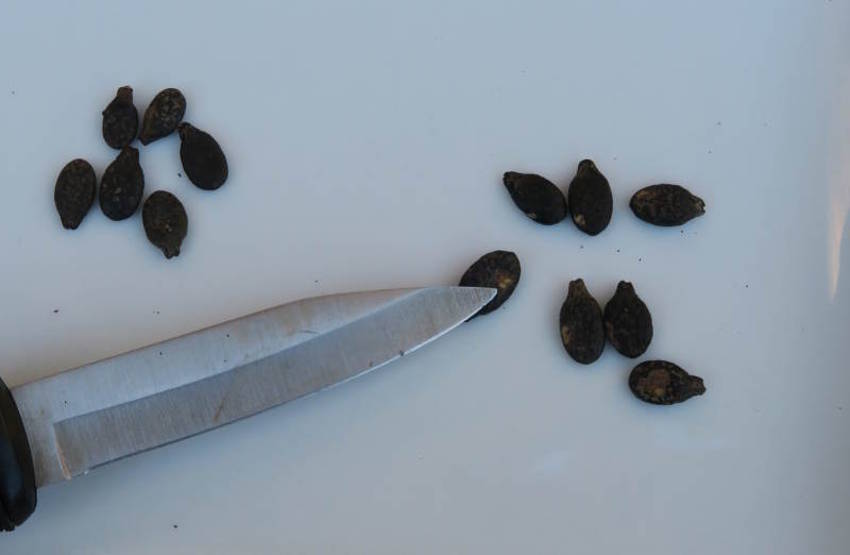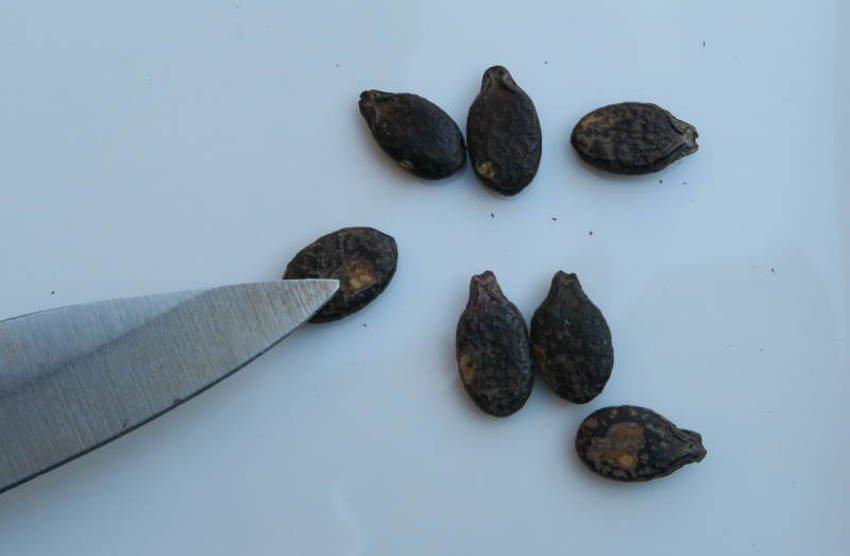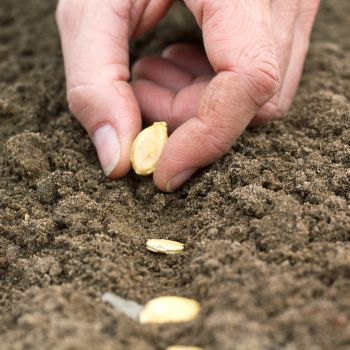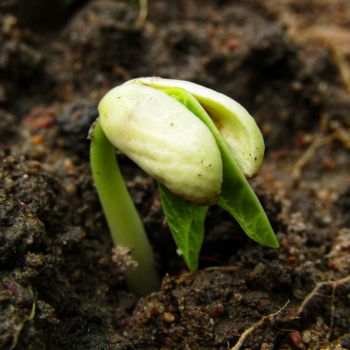Modern seeds live a cosseted life. After being harvested from their parent plant, they're stored under cool, dry conditions in the safety of a seed packet, before being nurtured by an attentive gardener to coax them into life.
In the wild, most seeds don't have it so easy. They'll need to spend a long season of dormancy over winter, exposed to the elements, and possibly enduring harsh conditions along the way. And that's not to mention those seeds which pass through the digestive tracts of birds and small mammals as a natural distribution tactic.
To survive these trials, many plant species have developed seeds with tough outer shells. These weatherproof husks keep moisture, bacteria, and gasses away from the seed embryo, preventing rotting or infection before germination can begin when spring arrives.
Unfortunately for the home gardener, this protection strategy can greatly reduce the germination rate of many seed varieties. Nature makes up for this through sheer strength in numbers, but a low success rate is more of an issue in the greenhouse or veggie patch where space is limited.
Luckily, experienced gardeners have a trick up their sleeves to overcome this problem.
Scarification to the Rescue
Scarification is the process of intentionally damaging a seed to encourage germination. Although this sounds drastic, it's really just a case of weakening the outer seed shell a little, giving moisture a way into the embryo to set the natural sprouting process in motion.
Which Seeds Should You Scarify?
Larger seeds with tough outer shells often germinate unreliably, and it can take weeks to see whether a sowing has been successful. Scarification both speeds up the process and increases the overall germination rate.
As an example, carob seeds rarely achieve more than a 10% germination rate when left to their own devices. Studies have found that using industrial scarification methods, this can rise to 80% or higher. While home scarification may not show quite such impressive figures, it will still make a very welcome difference.
Other widely grown seeds which are usually scarified include passion fruit, morning glory, nasturtium, luffa, and winged bean, along with most perennials that produce noticeably larger, harder seeds.
Testing Your Seeds
If you're not sure whether a particular seed would benefit from scarification, then a useful test is to soak a few samples overnight in some water. If the seeds swell or wrinkle, it shows that water has been able to penetrate into the seeds; they should happily germinate on their own. But if they stay resolutely hard and impervious, scarification can help nudge them into earlier action.
Common Scarification Methods
There are several scarifying methods that bring germination forward for stubborn seeds:
Chemical Scarification
In industrial agriculture, a chemical scarification process may be used. This involves using a solution of sulphuric acid, potassium nitrate, or another corrosive substance to weaken and wear down the seed husk.
Some home gardeners use household bleach in much the same way. However, it should go without saying that this is a risky route - for your seeds, your health, and the environment. Caution advised.
Thermal Scarification
Thermal scarification, as the name implies, uses heat to weaken the shell. Usually, this is done by plunging the seeds into boiling water and then leaving them to cool and soak for a day or two. For some seeds, particularly those which evolved in areas of high bushfire risk, dry heating or even flames can be used to mimic the extreme conditions they'd meet in nature.
Mechanical Scarification
However, by far the most straightforward, safe, and effective method for home gardeners is mechanical scarification using a variety of household implements. Here are some popular ways to do it.
- Use a sharp knife to make a shallow nick in each seed's shell. Take care not to cut too deep, and also watch your fingers with small, hard-to-handle seeds.
- Alternatively, use fine sandpaper or a nail file to gently wear away a section of the husk, revealing the paler flesh underneath.
- Use a kitchen microplane grater to scratch the surface of tougher husks.
- For larger seeds, some daring souls use a nutcracker to split the outer shell. Again, take care not to damage the inner seed embryo.
- For small seeds, try mixing with coarse sand, sealing in a lidded jar, and shaking vigorously to roughen up the surface. This is very much a hit-and-miss method - it's easy to go too far - but useful for large amounts of particularly fine seed.
In all cases, the aim is to weaken the shell and make it permeable to water. Excessive damage will risk the seed rotting before germination gets its chance, so use a light touch. It's better to be cautious and undertreat a few seeds rather than wreck a whole batch by being too enthusiastic.
When Not to Scarify
Don't be tempted to scarify each and every seed type in your collection. Some species such as parsley are just naturally slow germinators. While scarification can help, the risk of damage to such small seeds is likely to outweigh the benefits. Unless you're under real time-pressure with a late sowing, it's better to let nature take its course if the main issue is slowness rather than unreliable germination.
Also, don't be tempted to scarify too early in the season in the hopes of giving your seeds a lengthy head start. Scarified seeds don't keep well either in the soil or out of it, and so only use the process just before sowing at a realistic time of year.
Important note: The methods described on this page should only be used when necessary. These methods are not required or recommended on most seeds types.
A good rule of thumb in gardening is to step back and let nature take its course, providing the right conditions, and using a guiding hand only where necessary. Scarification fits squarely into this philosophy. Done with care, it's an organic and effective way of replicating the conditions some seeds need to thrive - and it'll do plenty to reduce the frustration that germination failure brings.







